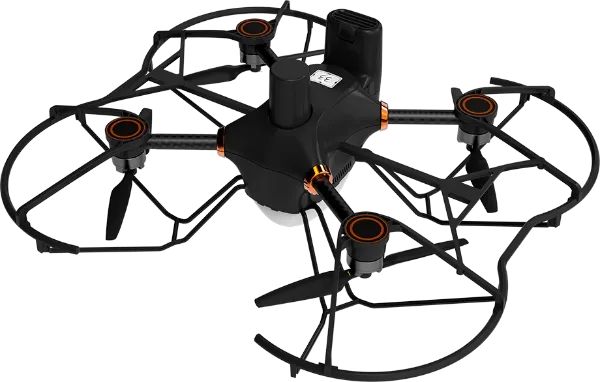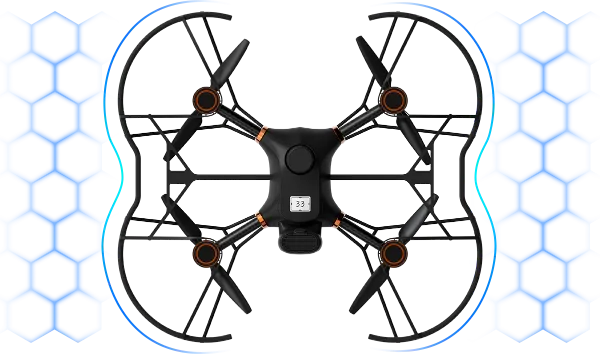Hotline:+86 199 2491 8168
Working hours:9:00-18:00(Beijing time)
The night sky has always been a canvas for the stars, but in recent years, it has been transformed into a stage for a new kind of spectacle: light show drones. These high-tech aerial displays have captivated audiences worldwide with their synchronized light patterns and intricate choreography. But how do they work? In this blog post, HighGreat will share the working principle of outdoor swarm light show drone for sale and explore the components that make these aerial shows possible.
1. Drones: At the heart of every drone light show are the drones themselves. These are typically small, unmanned aerial vehicles (UAVs) equipped with LED lights and advanced flight control systems.
2. Flight Controllers: Each drone is controlled by a flight controller, which manages the drone's movements, speed, and orientation. These controllers are programmed to follow a specific set of instructions to ensure precise coordination.
3. Lighting Systems: The LED lights on each drone are programmable and can display a wide range of colors and brightness levels. This allows for the creation of vibrant and dynamic light displays.
4. Communication Systems: For a drone light show to be successful, all drones must communicate with each other and with a central control system. This is achieved through wireless communication protocols that allow for real-time data exchange.
5. Software: The choreography of a drone light show is designed using specialized software that allows creators to plan and simulate the performance before it happens. This software also interfaces with the flight controllers to execute the planned movements.
6. Safety Measures: Given the large number of drones involved and the potential for collisions, safety is a paramount concern. This includes geofencing to prevent drones from straying into restricted areas, as well as fail-safes that can bring a drone down safely if it loses connection or encounters a problem.
- Flight Control Algorithms: These algorithms are the brains behind the drones' ability to fly in formation and perform complex maneuvers. They take into account the position, speed, and orientation of each drone to ensure a smooth and safe performance.
- GPS and IMU (Inertial Measurement Unit): Drones use GPS for outdoor positioning and IMU for detecting changes in the drone's speed and orientation. This combination provides accurate and reliable navigation.
- RTK (Real-Time Kinematic) GPS: For high-precision positioning, some drone light shows employ RTK GPS, which offers centimeter-level accuracy.
- Computer Vision: Advanced drone light shows may use computer vision to detect and react to their environment, allowing for more dynamic and responsive performances.
- Wireless Communication: Drones communicate with each other and the control station using various wireless protocols, such as Wi-Fi or radio frequency (RF) communication. This ensures that commands are sent and received quickly and reliably.

Creating a drone light show involves several stages:
1. Conceptualization: The first step is to come up with a concept for the show. This includes deciding on the theme, the story it tells, and the emotions it aims to evoke.
2. Design: Using specialized software, designers create a 3D model of the performance space and plan the movements and light patterns of the drones.
3. Simulation: Before the actual performance, the planned show is simulated to check for any errors or issues that need to be addressed.
4. Programming: The flight paths and light sequences are programmed into the drones' flight controllers.
5. Rehearsal: The drones are tested in a controlled environment to fine-tune the performance and ensure that everything runs smoothly.
6. Live Performance: On the day of the show, the drones are launched and perform the programmed choreography, with operators on standby to handle any unforeseen issues.
Safety is a critical aspect of drone light shows:
- Redundancy Systems: Drones are equipped with backup systems to ensure they can land safely if a primary system fails.
- Pilot Training: Operators are trained to monitor the drones during the performance and to intervene if necessary.
- Regulatory Compliance: Drone shows must adhere to local regulations regarding flight paths, altitude, and noise levels.
- Public Awareness: Organizers often inform the public about the event to prevent panic or confusion.

As technology advances, we can expect drone light shows to become even more spectacular. Developments in areas such as:
- Autonomy: Drones with greater autonomy will be able to perform more complex maneuvers without human intervention.
- Artificial Intelligence: AI could be used to create dynamic and adaptive performances that respond to audience reactions or environmental conditions.
- Energy Efficiency: Improvements in battery technology will allow for longer performances and quicker recharge times.
- Sustainability: There is a growing focus on using eco-friendly materials and methods in the production of drones and the organization of events.
Outdoor swarm light show drones are a testament to the incredible advancements in drone technology and computer programming. They offer a unique and mesmerizing form of entertainment that combines art, technology, and engineering. As the technology continues to evolve, we can look forward to even more breathtaking aerial displays that push the boundaries of what is possible in the sky.


Hotline:+86 199 2491 8168
Working hours:9:00-18:00(Beijing time)
Mailbox number:marketing@hg-fly.com